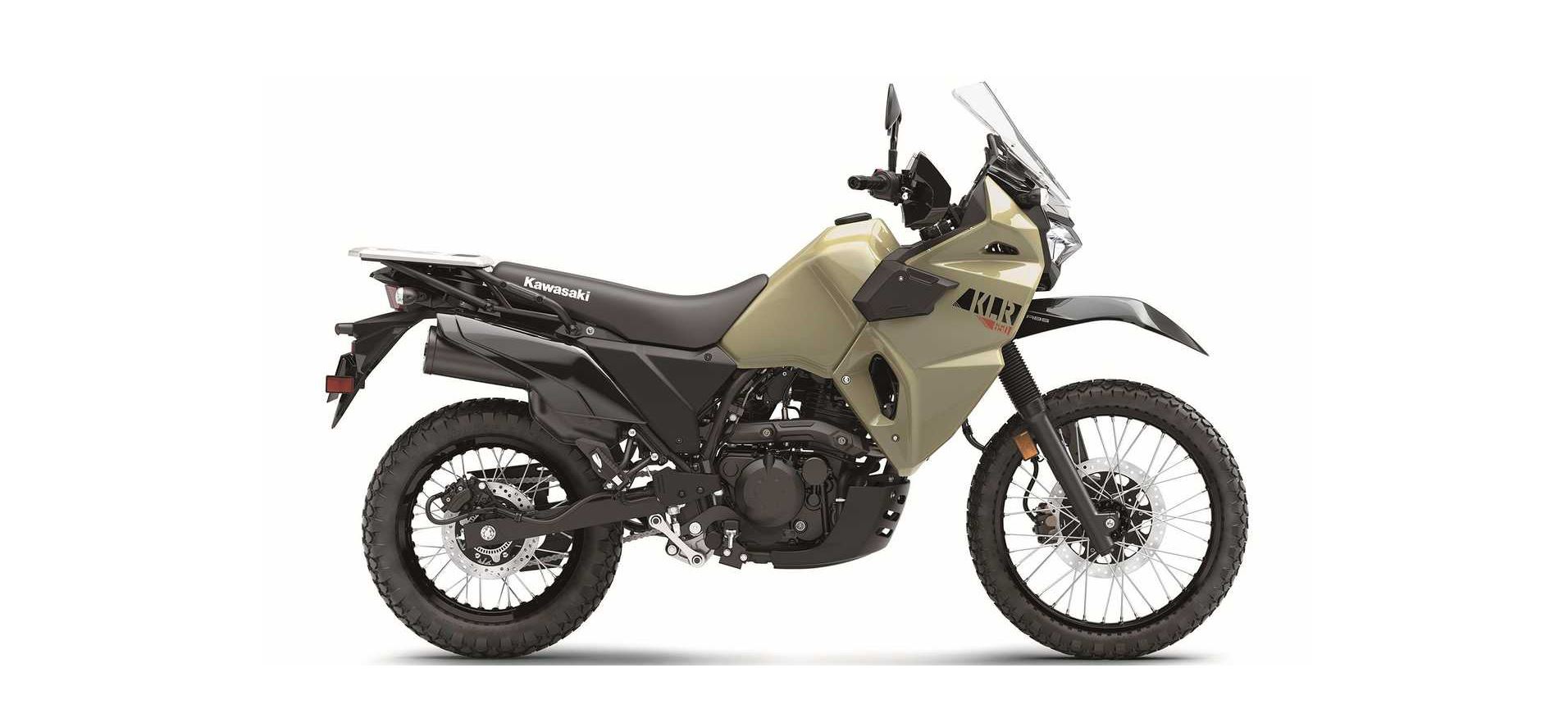2022 Kawasaki KLR650 ABS (only on ABS model)

ABS (only on ABS model)
ABS is designed to help prevent the wheels from locking up when the brakes are applied hard while running straight. The ABS automatically regulates brake force. Intermittently gaining gripping force and braking force helps prevent wheel lock-up and allows stable steering control while stopping. The brake control function is identical to that of a conventional motorcycle. The brake lever is used for the front brake and the brake pedal for the rear brake.
Although the ABS provides stability while stopping by preventing wheel lock-up, remember the following characteristics:
- To apply the brake effectively, use the front brake lever and rear brake pedal simultaneously in the same manner as a conventional motorcycle brake system.
- ABS cannot compensate for adverse road conditions, misjudgment or improper application of brakes. must take the same care as with mo- You to recycles not equipped with ABS ABS is not designed to shorten the braking distance. On loose, uneven or downhill surfaces, the stopping distance of a motorcycle with ABS may be longer than that of an equivalent motorcycle without ABS. Use special caution in such areas.
- ABS will help prevent wheel lock-up when braking in a straight line, but it cannot control wheel slip which may be caused by braking during cornering. When turning a corner, it is better to limit braking to the light application of both brakes or not to brake at all. Reduce your speed before you get into the corner.
- Same as a conventional brake system, excessive sudden braking may cause wheel lock up that makes it harder to control a motorcycle.
- During braking, ABS will not prevent the rear wheel from lifting.
- The computers integrated in the ABS Compare vehicle speed with wheel speed. tires can affect wheel speed, they may confuse the computers, which can extend braking distance. Since non-recommended
WARNING
ABS cannot protect the rider from all possible hazards and is not a substitute for safe riding practices. Be aware of how the ABS system operates and its limitations. It is the rider’s responsibility to ride at appropriate speeds and manner for weather, road surface and traffic conditions. the “Battery Maintenance” section in the MAINTENANCE AND ADJUSTMENT chapter.

